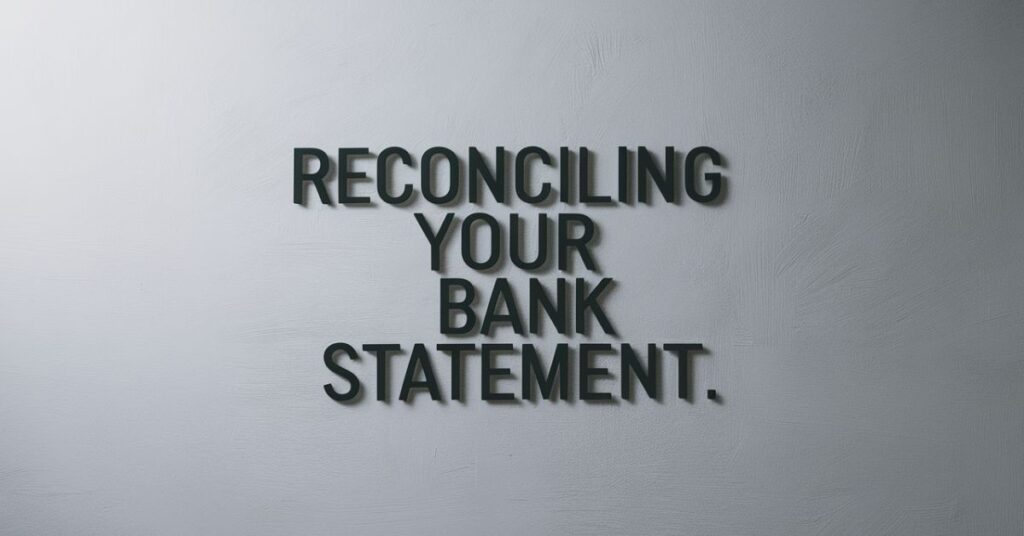Bank statements are monthly reports that show your financial activities. They list all the money you’ve deposited and withdrawn from your account.
Bank statements are like a GPS for your finances. They provide a detailed map of where your money is going, allowing you to navigate your financial journey with confidence. By understanding and utilizing your bank statements, you can steer your finances in the right direction and reach your financial goals.
These statements are important tools. They can help you manage your money and spot any problems. In this guide, we’ll explain everything you need to know about bank statements.
What Are Bank Statements?
A bank statement is a document that shows your account activity for a specific period, usually one month. It lists all the money that has gone in and out of your account during that time.
The statement includes details like:
- Your account number
- Your starting and ending balances
- All your deposits, withdrawals, and other transactions
They help you track your spending and ensure your account is accurate. They’re a valuable resource for managing your finances.
Decoding a Bank Statement
Bank statements may seem complex, but they’re actually quite straightforward. Here’s what you need to know:
The top of the statement will have your personal information, such as your name and account number. Below that, you’ll see the start and end dates for the statement period.
Next, you’ll find a summary of your account activity. This includes your starting balance, total deposits, total withdrawals, and ending balance.
Finally, the bulk of the statement will list all your individual transactions. For each one, you’ll see the date, description, and amount.
By carefully reviewing your statement, you can keep track of your spending and identify any errors or suspicious activity.
The Importance of Bank Statements
Bank statements are important for several reasons:
- Budgeting and Financial Planning Your bank statement is a record of your income and expenses. Analyzing it can help you see where your money is going and create a budget to reach your financial goals.
- Fraud Prevention If you notice any suspicious activity on your statement, you can quickly alert your bank and take steps to protect your account.
- Credit Verification Banks and lenders often require these statements as proof of your financial situation when you apply for a loan or credit card.
Overall, bank statements are a crucial tool for managing your money and maintaining financial stability.
Accessing and Reviewing Your Bank Statement
There are a few different ways to get your bank statement:
Paper Statements
Many banks will mail you a paper statement each month. This is the traditional method, but it can be less convenient than electronic statements.
Online Statements (e-Statements)
Most banks now offer the option to view and download your statement online through their website or app. This is often faster and more eco-friendly than paper statements.
Viewing Statements at the Bank
If you prefer, you can also visit your local bank branch and ask them to print out a copy of your statement.
No matter how you access your statement, it’s important to review it carefully each month. Look for any unusual or unauthorized activity, and ensure all your transactions are correct.
If you notice any issues, contact your bank right away. They can help you resolve the problem and protect your account.
Protecting Your Financial Information

They contain sensitive personal and financial data. It’s crucial to handle them with care to keep your information secure.
Secure Storage
Store your statements in a safe place, like a locked cabinet or a password-protected digital folder. Only share them with people who need to see them.
Proper Disposal
When you no longer need a paper statement, make sure to shred it or dispose of it safely. For digital statements, delete them from your computer or cloud storage.
Monitoring for Fraud
Review your statements regularly for any signs of unauthorized activity. If you notice something suspicious, report it to your bank immediately.
By taking these steps, you can help protect your financial information and prevent identity theft or fraud.
Using Bank Statements for Address Verification
They are often accepted as proof of address for various official processes, such as:
- Applying for a loan or credit card
- Renting an apartment
- Obtaining a driver’s license or ID card
- Enrolling in school or university
They are trusted as proof of address because they contain your name and the address associated with your account. This information is provided directly by your financial institution, making it reliable.
Preparing Bank Statements for Address Verification
When using a bank statement for address verification, make sure it’s up-to-date and accurate. Review the statement to ensure your name and address are correct, and that there are no errors or discrepancies.
You may also want to get a certified copy of the statement directly from your bank to ensure its authenticity.
Automated Data Extraction with Docsumo
If you need to verify addresses using them, consider using a tool like Docsumo. Docsumo uses advanced technology to automatically extract the relevant information from your bank statement.
This can save you time and ensure a high level of accuracy, compared to manually reviewing the statements. Docsumo also helps keep your sensitive financial data secure and compliant with data protection regulations.
Reconciling Your Bank Statement

Reconciling your bank statement is an important step in managing your finances. It involves comparing the transactions and balances on your statement to your own records.
Why Reconcile Your Statement?
Reconciling your statement helps you:
- Catch any errors or unauthorized transactions
- Ensure your account balance is correct
- Identify any outstanding checks or deposits
- Detect any fraudulent activity
By regularly reconciling your statement, you can keep your finances in order and quickly address any issues that arise.
How to Reconcile Your Statement
To reconcile your bank statement, follow these steps:
- Compare the opening balance on your statement to your own records.
- Go through each transaction, checking that it matches your records.
- Note any outstanding checks or deposits that haven’t cleared yet.
- Calculate the ending balance based on your reconciled transactions.
- Compare this to the ending balance on your statement.
If you find any discrepancies, contact your bank right away to resolve the issue.
Read this article: How to Send Money to a Korean Bank?
Bank Statements and Credit Verification
Bank statements are an important tool for credit verification. Lenders and financial institutions often require them when you apply for a loan, credit card, or other financial product.
How Lenders Use Bank Statements
Lenders review your bank statements to:
- Verify your income and spending patterns
- Assess your creditworthiness and ability to repay a loan
- Identify any red flags, such as overdrafts or unusual activity
By analyzing your bank statements, lenders can better understand your financial situation and determine the level of risk in lending to you.
Preparing Bank Statements for Credit Verification
When submitting bank statements for credit verification, make sure they are:
- Recent (typically from the last 2-3 months)
- Accurate and free of errors
- Reflective of your current financial situation
You may also need to provide additional documentation, such as pay stubs or tax returns, to support the information in your bank statement.
Managing Bank Statements after Verification
After using your bank statement for address or credit verification, it’s important to properly store and manage them.
Secure Storage
Keep your bank statements in a secure location, such as a locked cabinet or a password-protected digital folder. This helps protect your sensitive financial information.
Backup and Retention
Make backup copies of your bank statements, either in physical or digital form. Keep these backups for at least several years, as you may need to reference them in the future.
Proper Disposal
When you no longer need a bank statement, dispose of it safely. Shred paper statements and permanently delete digital copies.
Ongoing Monitoring
Regularly review your bank statements for any signs of fraudulent activity or errors. This helps you catch issues early and take appropriate action.
By following these best practices, you can ensure your bank statements are properly managed and your financial information remains secure.
Final Words
Bank statements are an essential tool for managing your finances. They provide a detailed record of your account activity, which can help you budget, prevent fraud, and verify your creditworthiness.
By understanding how to read, access, and protect your bank statement, you can take control of your financial journey and make informed decisions about your money.
Remember, regular review and vigilance are key to maintaining financial stability. With the right approach, your bank statement can be a valuable ally in your quest for financial well-being.
Frequently Asked Questions
How often should I check my bank statement?
You should carefully review your bank statement monthly.
Can I use my bank statement as proof of address?
Yes, your bank statements are often accepted as proof of address.
How long should I keep my bank statements?
You should keep your bank statements for a period of 1-7 years, depending on your needs.
What if I notice an error?
If you notice any errors, you should contact your bank immediately to resolve the issue.
Can I remove sensitive info before verification?
Yes, you can remove sensitive information, but be sure to keep your name and address visible.

David: Seasoned financial expert with 5 years in banking and investments.
Skilled in personal finance, market analysis, and wealth management. Empowers clients to achieve financial goals.





